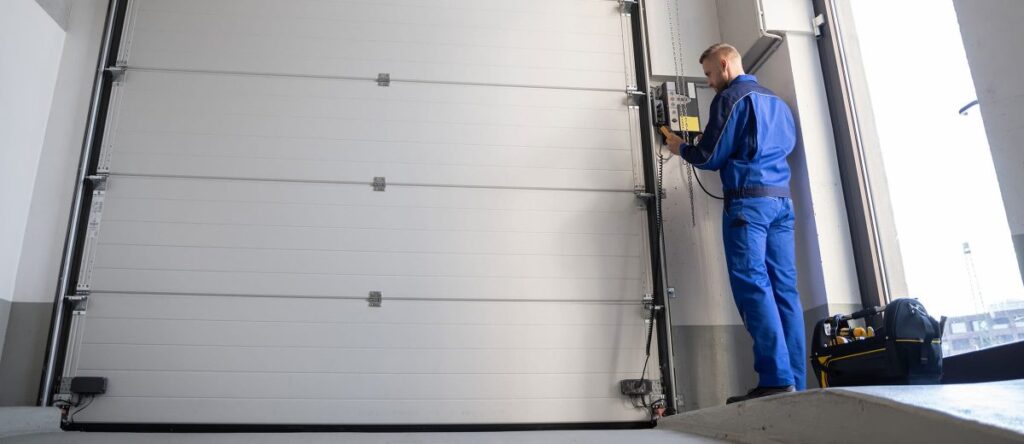A successful garage door business requires tracking and analyzing key performance indicators (KPIs) across various categories. These include financial metrics, customer-centric metrics, operational efficiency metrics, and employee performance metrics. Here’s a summary of the critical KPIs and their significance:
- Financial Metrics:
- Revenue: Monitor income generated by the business to identify growth opportunities.
- Gross Profit Margin: Assess profitability by comparing revenue and cost of goods sold.
- Customer Lifetime Value (CLTV): Measure the value customers bring over their relationship with the business.
- Customer-centric Metrics:
- Customer Satisfaction Score (CSAT): Gauge customer satisfaction and identify areas for improvement.
- Net Promoter Score (NPS): Assess customer loyalty and likelihood of recommending the business.
- Operational Efficiency Metrics:
- Lead Time: Track the time from order receipt to completion to identify bottlenecks.
- First-Time Fix Rate (FTFR): Measure the percentage of successful installations or repairs on the first attempt.
- Employee Performance Metrics:
- Employee Utilization Rate: Optimize resource allocation by measuring billable time.
- Employee Satisfaction: Monitor employee happiness and engagement to deliver better service.
An In-depth Look at Running a Successful Garage Door Business
Regularly monitoring these KPIs provides insights into business performance, guides decision-making, and enables the implementation of improvement strategies. Businesses can drive success in the competitive garage door industry by focusing on customer satisfaction, efficient operations, and employee engagement.
Running a successful garage door business requires carefully monitoring and analyzing key performance indicators (KPIs). By tracking critical metrics across financial, customer-centric, operational efficiency, and employee performance aspects, you can gain valuable insights into your business’s strengths and areas for improvement. This blog post will explore the most crucial KPIs for a garage door business, how to interpret them, and actionable strategies for driving success.
Garage Door Business Financial Metrics:
1. Revenue:
Tracking revenue allows you to understand the total income generated by your business. By analyzing revenue by product or service category, sales channel, or customer segment, you can identify areas of strength and opportunities for growth. To increase revenue, consider implementing effective marketing strategies, exploring new markets, or offering product bundling options.
2. Gross Profit Margin:
The gross profit margin reflects the profitability of your products or services. By calculating the difference between revenue and the cost of goods sold, you can assess the efficiency of your operations. To improve the gross profit margin, negotiate better pricing with suppliers, optimize inventory management, and streamline production processes.
3. Customer Lifetime Value (CLTV):
CLTV measures the total value a customer brings to your business throughout their relationship with you. Understanding CLTV helps identify high-value customers and informs your marketing and retention strategies. To increase CLTV, focus on delivering exceptional customer experiences, providing value-added services, and implementing customer loyalty programs.
Garage Door Business Customer-centric Metrics:
1. Customer Satisfaction Score (CSAT):
CSAT measures customer satisfaction with your products or services. By conducting surveys or gathering feedback, you can gauge customer sentiment. A high CSAT score indicates satisfied customers, leading to customer loyalty and positive word-of-mouth. To improve CSAT, ensure prompt responses to customer inquiries, provide quality installations and repairs, and actively monitor and address customer feedback.
2. Net Promoter Score (NPS):
NPS measures customer loyalty and their likelihood to recommend your business to others. By asking customers a simple question, you can identify promoters (loyal customers) and detractors (unhappy customers). To improve NPS, address customer concerns promptly, deliver exceptional service, and encourage positive online reviews and referrals.
Garage Door Business Operational Efficiency Metrics:
1. Lead Time:
Lead time measures the time it takes from receiving an order to completing the installation or repair. Tracking lead time helps identify bottlenecks and inefficiencies. To reduce lead time, optimize scheduling and dispatching processes, improve communication with customers and suppliers, and streamline internal workflows.
2. First-Time Fix Rate (FTFR):
FTFR measures the percentage of service calls or installations completed successfully on the first attempt. A high FTFR indicates efficient and effective service delivery. To improve FTFR, invest in ongoing training for technicians, ensure they have the necessary tools and equipment, and implement robust quality control processes.
Garage Door Business Employee Performance Metrics:
1. Employee Utilization Rate:
Employee utilization rate measures the percentage of time employees spend on billable activities. A high utilization rate indicates efficient resource allocation. To improve employee utilization, optimize scheduling and dispatching, provide clear job instructions, and track and analyze employee performance.
2. Employee Satisfaction:
Employee satisfaction plays a vital role in delivering excellent service. You can assess the overall work environment by measuring employee satisfaction through surveys or feedback channels. To improve employee satisfaction, foster a positive work culture, provide training and career development opportunities, and recognize and reward employee achievements.
Conclusion:
Tracking the right KPIs is essential for running a successful garage door business. You can gain valuable insights into your business’s performance by monitoring financial, customer-centric, operational efficiency, and employee performance metrics. Regularly interpreting and analyzing these KPIs will enable you to make data-driven decisions and implement actionable strategies for improvement. With a focus on continuous improvement and customer satisfaction, you can drive success in the competitive garage door industry.
